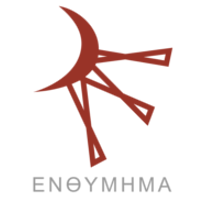The Shock of Attention
DOI:
https://doi.org/10.13130/2037-2426/7437Parole chiave:
Narrative medicine, attention, representation, affiliation, intersubjectivity, embodiment, enchantment, enactivismAbstract
Narrative Medicine is a clinical practice, a scholarly field, and a site of intensive research worldwide. This essay describes the inauguration of the field of narrative medicine in 2000 at Columbia University in New York, NY, USA and the principles and practices that have devolved from the initiating work. Clinical implications of narrative concepts of health care as learned from actual medical practice are described. The three movements of narrative medicine—attention, representation, and affiliation—are explored as means of engaging participants in creative acts of discovery and relation. Examples are provided of narratively-informed teaching and health care practice. Conceptual frameworks from aesthetic theory, phenomenology, literary and narrative theories, and cognitive sciences are advanced to portray the integrated study of individuals-in-the-world made possible by contemporary narrative medicine thought. Emerging concepts of enchantment, embodiment, and enactivism suggest future directions for the field.
Riferimenti bibliografici
Beckmann, Max. “Bird’s Hell.” http://www.bing.com/images/search?q=max+beckmann+birds+hell&view=detailv2&qpvt=max+beckmann+birds+hell&id=1D241C10BE6C4259B18F587E8F777A4D8E853DED3&selectedIndex=0&ccid=qiEIBXFG&simid=608019906787479141&thid=OIP.Maa2108057146f40d4914cca0299baac7o0&ajaxhist=0 Accessed 7.23.16. Web image.
Berthoff, Ann E. “Learning the Uses of Chaos.” In The Making of Meaning: Metaphor, Models, and Maxims for Writing Teachers, 68–72. Upper Montclair, NJ: Boynton/Cook, 1981.
Charon, Rita. “Narrative Medicine: A Model for Empathy, Reflection, Profession, and Trust.” Journal of the American Medical Association 286 (2001): 1897-1902. Print.
Charon, Rita. Narrative Medicine: Honoring the Stories of Illness. New York: Oxford University Press, 2006. Print.
Charon, Rita. “The Novelization of the Body, or How Medicine and Stories Need One Another.” Narrative 19, no. 1 (2011): 33-50. Print.
Charon, Rita. “At the Membranes of Care: Stories in Narrative Medicine.” Academic Medicine 87 (2012): 342-7. Print.
Charon, Rita, Nellie Hermann, and Michael Devlin. “Close Reading and Creative Writing in Clinical Education: Teaching Attention, Representation, and Affiliation.” Academic Medicine 91 (2016): 345-50. Print.
Charon, Rita, Sayantani DasGupta, Nellie Hermann, Craig Irvine, Eric Marcus, Edgar Rivera Cólon, Danielle Spencer, and Maura Spiegel. The Principles and Practice of Narrative Medicine. New York: Oxford University Press, forthcoming 2017. Print.
Chen, Andrew. Commentary on Bird’s Hell. Unpublished essay written for Narrative Medicine Seminar, “Observation and Uncertainty in Medicine.” College of Physicians & Surgeons of Columbia University. The author grants me permission to publish this comment on his paper. May, 2016. Print.
DasGupta Sayantani, Rita Charon. “Personal Illness Narratives: Using Reflective Writing to Teach Empathy.” Academic Medicine 79 (2004): 351-6. Print.
DasGupta, Sayantani, Dodi Meyer, Ayxa Calero-Breckheimer, Alex W. Costley, Gobeira Guillen. “Teaching Cultural Competence Through Narrative Medicine: Intersections of Classroom and Community.” Teaching and Learning in Medicine 18 (2006): 14-7. Print.
Derrida, Jacques. Of Grammatology, corrected edition. Trans. Gayatri Chakravorty Spivak. Baltimore: Johns Hopkins University Press, 1997. Print.
Dewey, John. Art as Experience. New York: Berkeley Publishing Group, 2005. Print.
Felski, Rita. The Uses of Literature. Malden, MA: Blackwell Publishing, 2008. Print.
Felski, Rita. The Limits of Critique. Chicago: University of Chicago Press, 2015. Print.
Goodman, Nelson. Languages of Art: An Approach to a Theory of Symbols. Indianapolis, IN: Hackett Publishing, 1976. Print.
Heiserman, Arthur and Maura Spiegel. “Narrative Permeability: Crossing the Dissociative Barrier in and out of Films. Literature and Medicine 25, no. 2 (2006): 463-74. Print.
Irvine, Craig A. “The Other Side of Silence: Levinas, Medicine, and Literature.” Literature and Medicine 24, no. 1 (2005): 8-18. Print.
Lewis, Bradley. “Narrative Medicine and Contemplative Care at the End of Life.” Journal of Religion and Health. DOI 10.1007/s10943-015-0130-6. Web.
Merleau-Ponty, Maurice. “Cézanne’s Doubt,” in Sense & Non-Sense. Translated by Hubert L. Dreyfus and Patricia Allen Dreyfus. Northwestern University Press, 1964. 9-25. Print.
Miller, George. “The Cognitive Revolution: A Historical Perspective.” Trends in Cognitive Sciences 7 (2003): 141-4. Print.
Mitchell, W.J.T. What Do Pictures Want: The Lives and Loves of Images. Chicago, IL: University of Chicago Press, 2005.
Ondaatje, Michael. The English Patient. New York: Vintage/Random House, 1993. Print.
Sands, Stephen, Patricia Stanley, Rita Charon. “Pediatric Narrative Oncology: Interprofessional Training to Promote Empathy, Build Teams, and Prevent Burnout. Journal of Supportive Oncology 6 (2008): 307-12.
Sedgwick, Eve Kosofsky. Touching, Feeling: Affect, Pedagogy, Performativity. Durham, NC: Duke University Press, 2003. Print.
Schafer, Roy. “Narrating, Attending, and Empathizing.” Literature and Medicine 23, no. 2 (2004): 241-51. Print.
Spencer, Danielle R. “The Art of Medicine: All Creatures Great and Small.” The Lancet 386 (2015): 22-3. Print.
Stein Leo. Appreciation: Painting, Poetry & Prose. Lincoln, Nebraska: University of Nebraska Press, 1996/1947. Print.
Taussig, Michael. Mimesis and Alterity: A Particular History of the Senses. New York: Routledge, 1993. Print.
Tsevat, Rebecca, Anoushka A. Sinha, Kevin J. Gutierrez, Sayantani DasGupta. “Bringing Home the Health Humanities: Narrative Humility, Structural Competency, and Engaged Pedagogy.” Academic Medicine DOI 10.1097.ACM.0000000000000743. Web.
Varela, Francisco J, Evan Thompson, Eleanor Rosch. The Embodied Mind: Cognitive Science and Human Experience. Cambridge, MA: The MIT Press, 1993. Print.
Weber, Max. “Science as a Vocation.” In Max Weber: Essays in Sociology. Edited by H. H. Gerth, C. Wright Mills. Oxford University Press, 1958. Ch. V pp. 129-158. Print.
Williams, William Carlos. “The Use of Force.” The Doctor Stories. Compiled by Robert Coles. New York: New Directions, 1984. 56-60, Print.
Dowloads
Pubblicato
Come citare
Fascicolo
Sezione
Licenza

Except where otherwise noted, the content of this site is licensed under a Creative Commons Attribution 4.0 Unported License.
Accettato 2016-12-21
Pubblicato 2016-12-29





